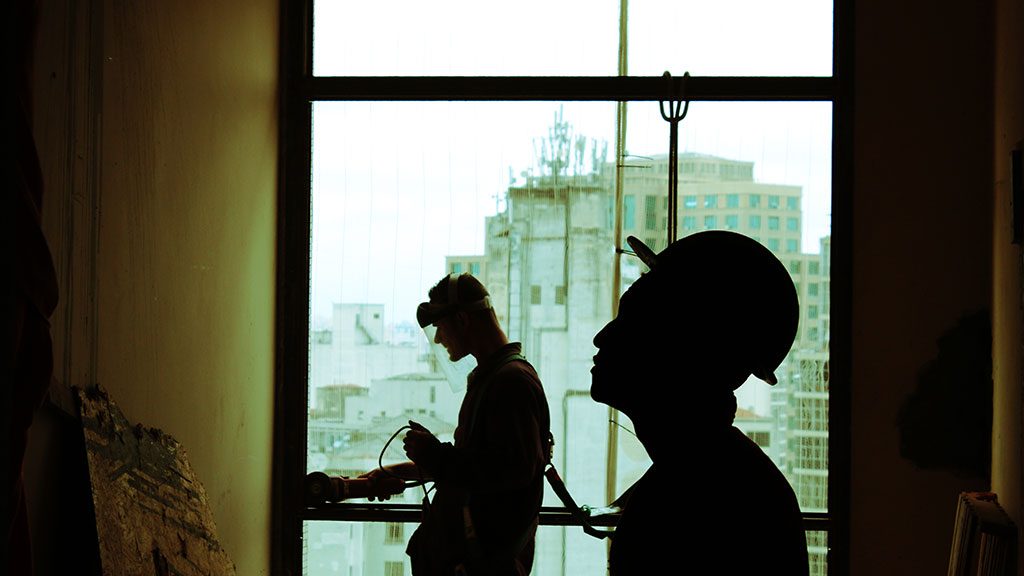When it comes to using mass timber in highrise buildings there are pros and cons, but regardless a major concern should be firefighter safety, says fire official Rick Cheung.
“We need to be mindful that when mass timber is going to be used in highrise buildings, the fire safety of the first responders who run into these buildings in an emergency when everyone else is running out, must be given a high priority because things often do not happen as planned,” he said.
Cheung, a fire protection engineer and an assistant chief in Vancouver Fire Rescue Services, spoke at the Society of Fire Protection Engineers, Engineering Solutions Symposium on Mass Timber in Waterloo, Ont. recently.
“Encapsulated Mass Timber Construction (EMTC) is currently permitted in the National Building Code (NBC) to be up to 12 storeys in height and proposals are underway to increase height beyond the 12 storeys,” Cheung noted. “Because EMTC is still quite novel, very few actual fires have been experienced. There hasn’t been any special fire hazard that has come to light.”
The fire service relies on three important pieces of infrastructure when responding to a blaze in a high building: the firefighters’ elevator, the exit stairs and the standpipe system located within the exit stairs. Maintaining the operation and integrity of the firefighters’ elevator for the duration of the fire event is of the utmost importance, he noted.
He said the most hazardous situation for any building is when it’s under construction.
“The fire protection systems are not yet in place or operational,” Cheung said.
“Fire compartmentation is not yet completed. Several spectacular fires have occurred that burned down entire buildings that were almost ready to be occupied.”
He added mass timber construction has several benefits and is safer compared to light wood framed building construction.
“Because of the large smooth mass of wood, mass timber is inherently harder to ignite than light wood framing lumber,” Cheung explained. “Mass timber panels are pre-cut at a fabrication shop off site, thereby providing superior quality control. The assembly of panels and beams and joints on the construction site is simple and fast with less room for errors and ultimately faster rate of construction means less time during which the building will be in a vulnerable state.”
However, even after a fire has been successfully extinguished by the sprinkler system or by the fire crews, firefighters may need to tear down wall, ceiling or floor membranes, including encapsulation material in EMTC buildings to check for fire extension or hot spots.
“The concern I have is the possibility that there’s a smoldering fire,” Cheung said. “Fires can get into joints, concealed spaces and can smolder for quite a while and it can affect the building’s structural integrity.”
He recommended every high building of mass timber construction should have its own independent water supply for its sprinkler system and at least two firefighters’ elevators which open onto elevator vestibules to safely support firefighters tackling a prolonged fire event.
Encapsulation of the mass timber is intended to prevent re-radiation between burning surfaces, and to delay the start of charring and the consuming of the mass timber. But in Cheung’s view, there hasn’t been enough research or tests done, especially when it comes to highrise mass timber structures.
“More research, more testing and the appropriate kind of testing should be done,” he said. “We just haven’t had enough experience with mass timber building fires to know the characteristics of such fires.
“When you get to highrises then there is more concern. The higher fire loads and the effect of smoldering fires. It will be a longer duration during fire operations and…so there is still exposure to firefighters from heat and smoke.”
The NBC permits some encapsulation to be removed within a suite or fire compartment. One of the issues, Cheung said, is the percentage of exposed wood allowable is not easily verifiable from visual inspections. It’s also very difficult to inspect every room in an apartment building.
“What’s even more concerning is it’s not enforceable if it is not inspectable,” said Chueng. “In some jurisdictions, and B.C. is going to be one of them, fire inspectors do not have the legal authority to enter into a private dwelling for the purpose of routine inspection without a warrant issued from a law court.
“We need to ensure the encapsulation is maintained throughout the life of the building can be enforced through routine inspections by the fire inspector. The code permission for exposed wood within private residential suites is not practical and therefore not good public policy.”
He added, in Vancouver, residential suites are prohibited to have any exposed mass timber that entices a resident to remove even more encapsulation after moving in.
He recommended the imp-act on the fire service should be given more consideration in the code change process.
“The impact on the fire service and firefighter safety should be expressly written as an objective in the building and fire codes,” said Cheung. “I am pleased to see progress has been made already with the recent re-organization and governance model for code development but the NBC needs more work to get us there.”
Follow the author on Twitter @DCN_Angela.



Recent Comments